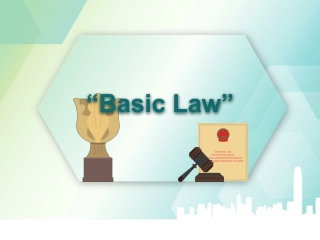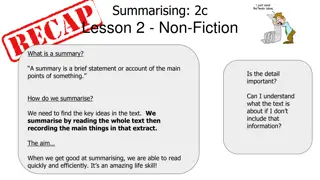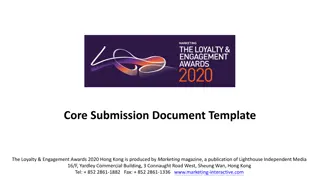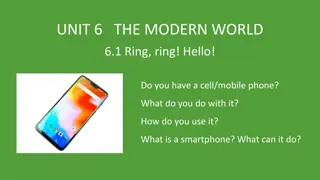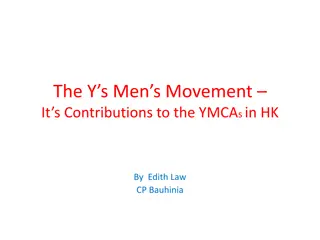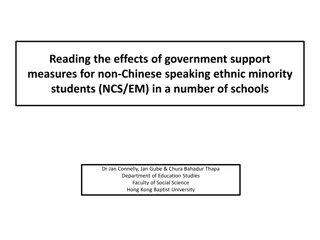
Smartphone Penetration and Usage in Hong Kong: Research Findings and Trends
Explore insights on smartphone penetration rates, typical activities, and barriers to smartphone use for learning among LIS students in Hong Kong. Discover research questions, methodology, sample demographics, and a breakdown of smartphone use for daily needs and learning purposes.
Download Presentation

Please find below an Image/Link to download the presentation.
The content on the website is provided AS IS for your information and personal use only. It may not be sold, licensed, or shared on other websites without obtaining consent from the author. If you encounter any issues during the download, it is possible that the publisher has removed the file from their server.
You are allowed to download the files provided on this website for personal or commercial use, subject to the condition that they are used lawfully. All files are the property of their respective owners.
The content on the website is provided AS IS for your information and personal use only. It may not be sold, licensed, or shared on other websites without obtaining consent from the author.
E N D
Presentation Transcript
Learning with smartphones: a Hong Kong experience INFuture2015 Zvjezdana Dukic The University of Hong Kong dana.dukic@gmail.com
Smartphone penetration 2014 Singapore South Korea Sweden Hong Kong 85% 80% 75% 74% 72% 70% 69% 68% 68% 67% 66% 65% 65% 62% 60% 58% 57% 57% 57% Spain China Denmark UK Norway Taiwan Australia Netherlands Ireland Hong Kong MTR Israel Switzerland New Zealand Finland USA Canada Source: Google's Consumer Barometer 2
Smartphone use What? Where? Source: data from Morgan Stanley, Google Think and Opera 3
Research questions This study intends to answer the following research questions: To what extent LIS students use smartphones for academic leaning? What typical learning related activities do LIS students perform with smartphones? What are possible barriers to LIS students smartphones use for learning? 4
Research method Research method: online survey Research technique: questionnaire 17 questions: 15 closed-ended and 2 open-ended 3 parts: demographic data, smartphone use for daily needs, smartphone use for learning purposes Sample: 93 LIS bachelor and master students University of Hong Kong 5
Sample demographic characteristics Age Gender 20 - 30 54% Male 35% 31 - 40 43% Female 65% 41 - 50 3% Study level Bachelor degree 42% Master degree students 58% 6
Smartphone use for daily needs Communicate with email, SMS, chat, etc. 95% Use search engines 89% Use social media (e.g. Facebook, Twitter) 83% Games, music, movies, TV series, etc 82% Use productivity tools (calendar, notes etc.) 75% Casual reading 75% Find locations (streets, restaurants etc.) 59% Accessing reference sources (e.g. 52% Hobbies, sports, fitness, travel 46% Academic reading: articles, e-books, websites 40% Popular activities: talking, sending email, texting, chatting, connecting with social media, using search engines and productivity tools, casual reading 7
Smartphone use for learning Study findings on LIS students smartphone use for learning are organized under four major categories: communication and sharing browsing, reading, viewing and listening searching and accessing information and using productivity tools and recording 8
Communication and sharing Daily/weekly Talking to classmates to discuss course materials, assignment etc. 58% Using email, SMS, MMS or chat apps for study related issues with classmates/teachers 62% Posting to class forums on the learning management platform (e.g. Moodle) 26% Posting or commenting study related items to social networking sites like Facebook, Twitter, 33% Study participants frequently use smartphones to discuss study related issues by talking or texting Extensive smartphone use for study related communication indicates that smartphones facilitate collaborative learning 9
Browsing, reading, viewing & listening Daily/weekly use Browsing through websites, blogs, wikis, 68% Browsing or reading posts on social 85% Reading articles from academicl journals & 22% Reading e-books 23% Viewing a video clip (from YouTube, TED talks 55% Accessing and browsing learning management 24% Listening to podcasts 22% Study participants use smartphones to browse websites, read posts on social networking sites and watch video clips Less frequently they read academic literature 10
Searching and accessing information Daily/weekly use Searching with search engines (e.g. Google, 79% Accessing reference sources (e.g. 44% Accessing and searching e-databases 20% Accessing and searching library catalog 28% More often they search with search engines than by using e-databases or library catalogs 11
Using productivity tools and recording Daily/weekly use Planning or checking a personal schedule (e.g. Google calendar, organizers) 55% Making notes with note taking tools (e.g. Evernote) 45% Creating documents (e.g. text, presentation, spreadsheets) 21% Taking photos to record learning materials (e.g. book pages, slides) 45% Audio recording presentations, seminars, interview, etc. 28% Frequently use scheduling and note taking tools Photo taking is also popular 12
Barriers to smartphone use for learning Medium/high barrier Screen size is too small 87% Reading is difficult 82% Typing is difficult 72% Web page is not formatted for smartphone 86% Load time is slow 72% Small screen is the major barrier Web pages not formatted for smartphones and slow load time are also high barriers 13
Conclusions LIS students from Hong Kong use smartphones for learning and study purposes They use smartphones for browsing,reading or watching study related materials from the Internet but less frequently for reading academic journals and e-books Further, they use smartphones for searching with search engines, but less frequently for searching library catalogs and e-databases LIS students frequently use productivity tools (e.g. calendars, note taking tools, to-do lists) and photo taking smartphone capabilities 14
Conclusions Study findings also show that LIS students commonly use smartphones to discuss study relates issues with classmates, therefore, smartphones can be considered as facilitators of collaborative learning Major barriers are smartphone small screen, absence of smartphone friendly webpages and too slow loading time Findings of the study can be useful for educators and librarians Further studies on smartphone use for learning are recommended 15

